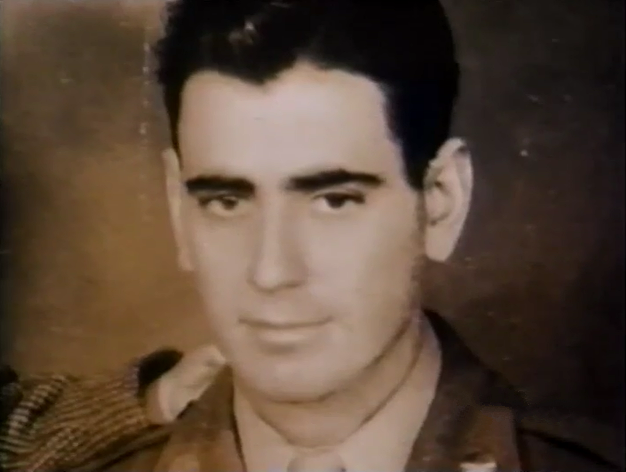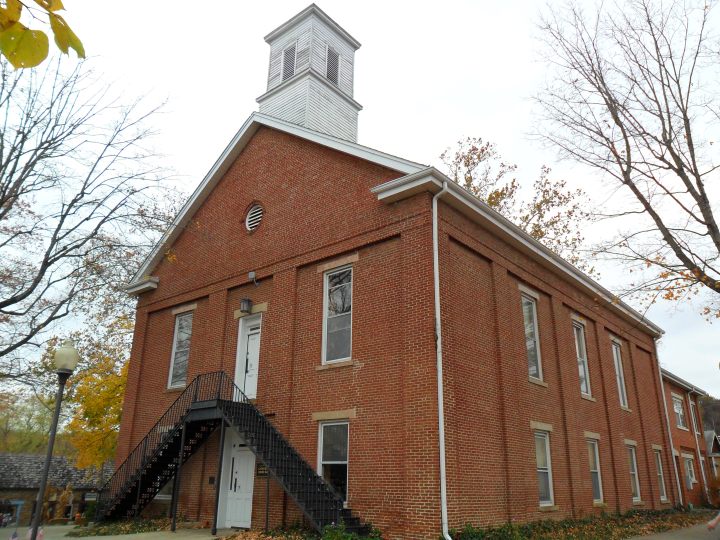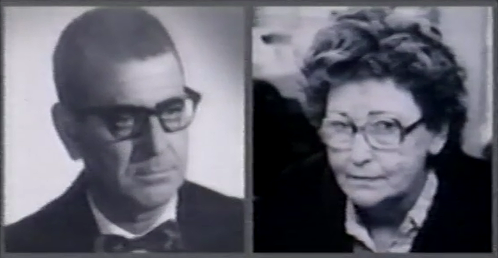This One Unsolved Mystery In Indiana Will Leave You Baffled
A man can’t die twice, right?
On November 18, 1970, a fire broke out in a barn in Nashville, Indiana. Volunteer firemen from the small community struggled to contain the flames, but once extinguished, firefighters found (what remained of) a smoking body in the ashes. The body had no arms or legs and was found with a shotgun laid across its chest. The body was identified as Clarence Roberts.
The Roberts family had lived a lavish lifestyle—one that the income from Clarence’s local hardware shop could not maintain—and had fallen into deep debt. Clarence, it appeared, had committed suicide. Firefighters claimed that the flames were so hot that they had burnt his limbs right off.

The citizens of Nashville couldn’t believe a man like Clarence would kill himself, regardless of his financial woes. He was a well-respected community member, a loving husband and father, and even ran for (and easily won) the county sheriff position in 1950. He was a veteran, who had returned from the war and worked hard to build quite a fortune before his financial troubles arose. He had earned 33rd degree status at the Masonic Lodge; one of only three men in the country to attain this highest honor.
Ashamed of his squandered fortune, a close friend of Clarence’s reported that he had seen the man crying and speaking of suicide as a means to “make his wife the richest widow in Brown County.”
A man, overwhelmed by guilt takes his life to save his family. Straightforward enough, right? Wrong.

On November 29, 1980, a decade later, another fire erupted at the Roberts’ residence. This time, two bodies were discovered; identified as Geneva Roberts…and Clarence Roberts.
Something’s awry here. Let’s take another look at that first fire…
County coroner and mortician Jack Bond began uncovering a few disturbing details on the embalming table. Bond was experienced in his field and had seen plenty of suicides and fatal gunshots…but he could not find a such a wound, which should have been hard to miss if produced by a shotgun.
And then there’s the ring…the gold Masonic ring inscribed with the name “Clarence Roberts,” which was found beneath the body. How could this ring, which had a much lower melting point than human bone, have survived a fire that had burned off this man’s limbs?
Things just didn’t add up. Bond refused to sign a death certificate reporting suicide without a wound to prove it.
Indiana State Police took on the case. Medical forensic experts compared Clarence’s old dental X-rays to those of the dead man. No match.
Blood samples taken during the autopsy showed blood type AB. Blood samples taken from Clarence’s family revealed he could not possibly have had an AB blood type.
The unidentified corpse was buried in an unmarked grave.
There are several theories swirling about out there, but the one most authorities believe is this: Roberts feared losing everything, but he was too prideful to kill himself, yet unwilling to face the mountainous debt he had accrued. Clarence staged “his” death by killing a homeless man, sawing off the man’s arms and legs, and strategically placing the shotgun next to the body before torching the place.
Gruesome? Yes. Probable? Also yes.
Police discovered that Clarence had recently purchased a $1 million life insurance policy, which named Geneva as the beneficiary. Under the questionable circumstances, the insurance company denied Geneva the cash. She took a job as a lowly dishwasher, but police continued constant surveillance, as they believed she had been in on the crime and that Clarence, who had apparently fled, would come back to her eventually.
Geneva made appeals to the insurance company to make a legal decision on whether her missing husband was dead or alive (to determine whether she had a rightful claim to the insurance money). The final appeal, which began nine years after the crime, could not produce an impartial jury so the decision was to be made by a single judge, chosen by the Indiana Supreme Court.

The trial was doomed from the start; Geneva had no case. Forensics experts once again produced the dental X-rays: no match. More disturbingly, the insurance company called forth an anthropologist, who presented evidence of “butchering marks” on the charred bones, indicating they had been hacked apart. An arson expert gave proof that the fire had been intentionally set. Three witnesses were called to testify who claimed to have seen Clarence since his “death.”
Clarence was ultimately declared to be alive, but his once-respected reputation died on the courtroom floor.
One month after this decision was made, a fire consumed the house rented to Geneva Roberts. Her body was quickly identified by a forensic pathologist; however, the other body, tentatively identified as Clarence, was once again under debate.

Family members were asked to help identify his body; all reported that it was, once again, not Clarence. Nobody believed he had died in the 1970 fire, and nobody believed he had died in the 1980 fire. There was, after all, a man who had been living on-and-off with Mrs. Roberts in the rented house for the last six years. Family members did not know his name, neighbors had seen him and claimed he was not Clarence.
The police stood by their identification, and found the forensic evidence strong enough to determine that this time, it was Clarence Roberts; however, the Roberts family continued to refute the decision and would not claim the body after autopsy. The family requested the remains of the “John Doe” from the 1970 fire and buried him instead alongside Geneva, under a gravestone proclaiming “Clarence Roberts,” but with his date of death listed as 1980.
Some believe that Clarence did come back for Geneva and support the official determination of his death in 1980. Others claim to have seen Clarence alive, despite the evidence of his death. We do know that the man buried under Clarence Roberts’ gravestone died in 1970…and is not Clarence.
Who was he? What the heck happened during this decade-long case? Where was Clarence? Did he run off to Mexico, as one witness testified?
Though the police case is closed, there are still so many questions left unanswered. Regardless of what truly happened, there are some details we will never have answered—they are buried with Clarence in his grave(s)…unless he faked it all twice and lived out his days on a Mexican beach.
For a truly interesting read, check out this archived copy of the Chicago Tribune, detailing the final appeals decision, dated February 17th, 1980…just 11 months prior to the 1980 fire.
What do you think? Was Geneva in on it? Was this all an insurance scam gone wrong? Was the 1980 fire a double-suicide? There were questions raised about third party involvement in the 1980 fire…
OnlyInYourState may earn compensation through affiliate links in this article. As an Amazon Associate, we earn from qualifying purchases.









